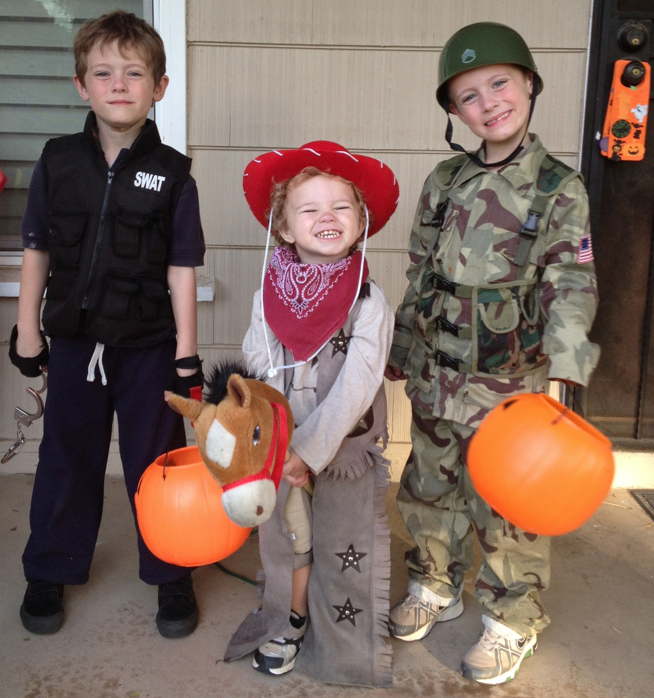Halloween is an exciting time for children. The costumes, parties and of course candy. Parents also look forward to October 31. The memories created with their children make their hard work preparing for the holiday worth it.
More than Trick or Treat
But how can parents help children do more than earn bags of treats or indulge in fun?
Did you know Halloween is the perfect time to encourage literacy?
It may seem strange but Halloween provides the perfect opportunity to enhance literacy for infants, toddlers and pre-school age children.
Improving Literacy Skills Prior to Reading?
Literacy encompasses much more than reading and writing. Developing strong oral language skills help young children understand the connection between written letters and sounds and are vital for reading, writing and critical thinking skills.
Literacy skills include:
- Vocabulary (introduce new words to expand vocabulary)
- Phonemic awareness (share how words are made of different sounds)
- Print awareness (show how printed letters are symbols for sounds and words)
- Learning to listen (listen to rich conversation and help children mirror language and then formulate their own responses)
Infants, toddlers and young preschoolers must meet important oral language milestones and holidays like Halloween are perfect for parents and caregivers to have conversations to facilitate learning.
Below are 9 ideas to spark these important conversations.
- Your Costume: Children love talking about things that are interesting to them. Ask about their costume and other super hero, dinosaur or princess trivia.
- Halloween Vocabulary: Discuss new words/ideas like jack o’ lantern or pumpkin carving. Allow infants to hold or touch an object while you say a new word to increase comprehension.
- Costume Sounds: Practice saying the names of unfamiliar costumes. Identify the different sounds that make up each word like w/i/ch.
- Counting Colors: Ask questions that lead children to count. Is the pumpkin orange, or ghost white and how many do you see? Take turns talking back and forth.
- Scary or Nice: Ask if a costume is supposed to be scary (or silly) or nice to encourage critical thinking. Help children understand unfamiliar Halloween sights or sounds by providing background in an age appropriate way.
- Silly Songs: Holiday songs, rhymes or poems will delight and engage children. Change familiar tunes for more fun – “Twinkle, twinkle little star” could become “Pumpkin, pumpkin orange and bright, sitting out on Halloween night…”
- Make Believe Questions: Ask abstract questions like, “What would happen if that little girl could fly on her broom?” or “If that pumpkin could talk, what do you think he would say?”
- Be My Eyes: When it is time for a break, sit down with your child, close your eyes, hold their hand and ask your child to be your eyes. Have them describe everything they see around them. Ask questions as they narrate – “What color was the girl’s costume?” or “Do they look like they are having fun, are there smiles on their faces?”
- Grateful Listening: Play a listening game. After children express thanks when trick-or-treating, ask them to listen and guess what the person will say or do. Will they say, “You are welcome,” or simply smile? What does a smile tell about how the person feels?
Regardless of the specific conversation, the love and interest a child feels as you take time to talk with and listen to them will provide the confidence they need to continue reaching important literacy and other developmental milestones.
Family Literacy Day: Saturday, Nov. 2
Download the Early Literacy Guide from Read On Arizona
Brooke Toles-Johnson leads Valley of the Sun United Way’s Read On Greater Phoenix initiative to build proficient readers by third grade. Her passion for literacy unfolded prior to joining United Way. Previously, she served as the Program Director for a statewide literacy program in Oregon and provided leadership and guidance for school programs in 32 counties, serving 11, 000 children annually.

